Eberhard Heinrich Zeidler's Tension Cables
Sunday, April 05, 2009
 Eberhard Heinrich Zeidler O.C., O.Ont. ( January 11, 1926 in Germany) is a Canadian architect. He studied at the Bauhaus, Weimar, Germany, and the Technische Hochschule, Karlsruhe, Germany. Zeidler immigrated to Canada in 1951 and formed his first partnership with Blackwell and Craig of Peterborough, Ontario. He later went on to create a new firm, Zeidler Roberts Partnership/Architects in Toronto, and offices in Washington, London, Berlin, and West Palm Beach, Florida. I met up with architect Eberhard Heinrich Zeidler sometime in 1986 when I went to photograph him for Equity Magazine. I was accompanied by editor Harvey Southam who told me, "You will like this man. He will remind you of Vernher von Braun. He is crazy about these tension wires that keep the roof of his new Canada Place up." I remember that lighting the man was a bit of a nightmare but he was pleasant and patient. Since 1986 I think that Zeidler's Canada Place has served us well. The "sails" became one of the symbols of our city. I believe that there is nothing iconic about the new Vancouver Convention Centre billed as the largest waterfront convention centre in Canada. As I look back (people tell me that this has become an obsession) it seems to me that if one could transport the Vancouver Museum and Planetarium via the Star Treck transporter to the waterfront it would become a Vancouver icon with our sails. The new convention centre with its large green roof will add nothing memorable to our waterfront. They should have contacted Eb Zeidler. He would have come up with something that would have put us on the map. The new convention centre will just cement the idea abroad that we Canadians are boring.
Going To The Theatre As A Subversive Activity
Saturday, April 04, 2009
 In the early 70s I was a high school teacher at a private school for wealthy American and other foreign kids in Mexico City. I was idealistic and I had teaching in my blood. Both my mother and grandmother had been teachers. This seemed to be my career, too. My bible was Neil Postman and Charles Weintgartner’s Teaching as a Subversive Activity (1969). In many ways I was at odds with the school principal who was a member of the Daughters of the American Revolution and she was enamored with Richard Nixon. One day my students, ninth graders, were vocally complaining about the stupidity of the coming student council elections. Their complaints sounded much like the modern beef about politicians these days. It was about promises being made and never carried out and how the student council really had no power as democracy was not evident in a school ruled by an irond hand principal. In spite of everything that I was accused of having done, including the corruption of youth, much later, all I told my students was, “If you don’t like the methods being used for the election of student council officers, change the system. Look up how governments were changed in my country of Argentina.” My ninth graders made the motion of participating in the election proceedings and some ran for the only office available for ninth graders, the office of treasurer. But I knew something was up as they would whisper in corners and stare in my direction when I passed them by the school corridors. The day of the elections we had an assembly. Just before it all started a couple of my students went up to the principal and told her that they had a relevant announcement to make. They went up to the microphone while a few other students surrounded the sound system controls. The two students then explained they were going to read us the school constitution. The principal smiled. After reading it they set it on fire. We all watched in shock as the told us that the constitution was no longer in effect and that the 9th grade had taken over the student council. At that point the school principal was looking in my direction in a most unpleasant way. I remember how funny it was to see all those 12th graders who were running for president and vice president protest. They demanded a return to democracy. To make matters worse for myself I was called into the principal's office and blamed for the coup. She said, "This is not right if you believe in democracy." I was perhaps to young and also too stupid to check myself before I answered, "Only if you believe in it." I was not fired. A few weeks later I had written on the board the following: While performing the part that is truly ours, how exhausting it is to be obliged to play a role which is not ours: the person you must really be, in order to fulfill your task, you must not appear to others to be, in order to be allowed by them to fulfill it. How exhausting – but unavoidable, since mankind has laid down once and for all the organized rules of social behaviour.I asked my class if they could take a guess as to who might have written the above words. The principal suddenly walked into the room unannounced and said, “Probably Fidel Castro.” She had pegged me for a communist. When I told them all that the writer was no less than Dag Hammarskjöld the ex Secretary General of the United Nations the principal turned around and left the room. It was somewhat in that spirit of duplicity that I invited Rebecca to attend Studies in Motion – The Hauntings of Eadweard Muybridge tonight. I told Rebecca that her ex-ballet teacher, Andrea Hodge was the movement rehearsal director, that Crystal Pite was the choreographer and that Kim Collier was the director. I told her the story of Eadweard Muybridge but I did not reveal to her that 11 of the 12 actors would take all their clothes off many times during the play. We watched a bit of Rigoletto at Opera Sushi before going to the Playhouse. The owner chatted with Rebecca and noticed how she has grown. I told him we were out for an evening of theatre. In the end Rebecca said to me, “I have been entertained tonight. I really liked the play. And like you say, Papi, it is a play I will not forget.” Perhaps we need not see Beau Geste (my personal right of passage from boyhood to that transition into adulthood). Rebecca has just about grown up.
Friday, April 03, 2009
 Last night at the opening of the Electric Company's Studies in Motion - The Hauntings of Eadweard Muybridge presented by the Playhouse Theatre Company, I missed Robert Chesterman very much. During the intermission of the same play at the Frederick Wood Theatre in January 2006, I ran into red-haired, red-faced film director Robert Chesterman. A man who had been born in England and had been a TV and film pioneer at the CBC was wowed by the show. “I have seen just about everything in my life (he was 75) but I have never seen anything like this. It is fantastic.” I was just as amazed and delighted at the performance. But for the moment I had to put that aside. I saw a kind of hope in the older man that gave me an impetus to realize that there is much excitement left for me to see in my own life (I am 66). When Chesterman died the next year I remembered his excitement. I still have a bit of his hope for the new and undiscovered.  There is theatre, there is ballet, there is opera, there is film there is television. It is not often that any of these art disciplines mix or merge. Of late, most operas have excluded the traditional ballet that many productions incorporated in the 19th century. A recent production of Aida by the Vancouver Opera included some dance. One of my favourite Vancouver male dancers, Tod Woffinden was relegated to looking like an Apache Indian. The dance was terrible. I have seen many modern dance works that attempt to bring in projected video. Most of these have not satisfied me. In Studies in Motion – The Hauntings of Eadweard Muybridge the folks at the Electric Theatre Company (actor Jonathon Young, director Kim Collier, below rigth, and playwright Kevin Kerr, above, decided to bring into their mix the choreography of Vancouver’s Crystal Pite, below, left. This was a felicitous decision and the result is a play that is dance. It is dance that is theatre. It is an amalgamation that is better than its two parts. 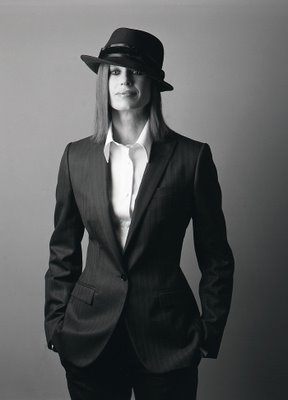 The play with the help of Crystal Pite’s choreography and music by Patrick Pennefather (well known in the Vancouver dance scene) somehow transported me into the 19 th century when science was an all-is-possible solution to the world’s ills. Robert Gardiner’s stark scenery of projected white lines and the human figures moving back in forth, draped and undraped, seemed all in a realistic black and white. I was watching Muybridge himself (Andrew Wheeler) perform his experiments in human and animal locomotion. Eadweard Muybridge himself is ample proof that truth is far stranger than fiction. As an example you might consider that before the English born photographer began his motion studies he went off to take pictures in Guatemala and Panama under the name of Eduardo Santiago Muybridge. When he died in 1904 in Kingston upon Thames (where he was born) his memorial stone misspelled his name Eadweard Maybridge, and the crematorium register calls him Eudweard Muybridge!  Between his birth in 1830 and his cremation in 1904 Muybridge’s life was full of excitement, murder, a lawsuit all well covered by Kevin Kerr’s play. Perhaps the most singular event in Muybridge’s career involved a horse, a horse that should be as famous as the horses listed below. Unlike those other horses this one had a surname. 1. Bucephalus, Alexander the Great’s horse. 2. Cincinnatus, General Ulysses S. Grant’s horse. 3. Traveler, General Robert E. Lee’s horse. 4. Copenhagen, the Duke of Wellington’s horse at Waterloo. 5. Rocinante, Don Quixote’s horse. Before Eadweard Muybridge came along, famous 19th century French painter Ernest Meissonier had his son Charles and several cuirassiers, veterans of the Napoleonic wars, galloping in his back garden. These studies in the motion of horses were for Meissonier's epic paintings of Napoleon in famous battles. The painter was obsessed with detail. Not being able to see the motion itself, Meissonier had a little railroad built in the garden and had assistants push his little railway car down a hill while a horse galloped on the side. Meissonier furiously sketched while trying to discern the pattern of the horse’s hooves, to no avail. 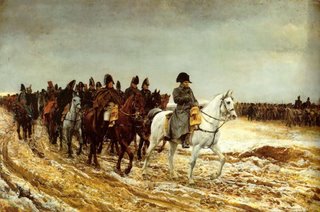  On June 15, 1878, on a clear and sunny day (good for photography involving slow film and slow lenses of the time) in Palo Alto, California, amid a gathering of art and sports journalists, Eadweard Muybridge photographed the first successful serial images of fast motion. The subject of these photographs was the trotting horse, Abe Edgington, right, harnessed to a sulky ( a two-wheeled sit-down chariot-like carriage). The horse was owned by railroad builder and former governor, Leland Stanford. The images proved Stanford's theory that during a horse's running stride, there is a moment of suspension where no hooves are touching the ground. What had begun as a topic of unresolvable debate among artists and horse enthusiasts now launched a new era in photography, and the birth of the motion picture. It also inspired artists of the time to finally and accurately depict the horse in motion. One of the most famous was Thomas Eakins’ (grandly played by Jonathon Young in Studies in Motion) painting A May Morning in the Park painted in 1879-80 as a result of careful observation of Muybridge’s work.  During the play 11 of the 12 performers manage to take all their clothes off. It is done humorously in some instances but in most the effect is scientific and clinical and should not offend anybody. I plan to return with my 11-year-old granddaughter Rebecca as I think this is a play that she will relish in years to come. There are several stand out performances. Allan Morgan is perfect and should not consider ever wanting to get in shape again. Those who will see the show will understand and snicker when I suggest Morgan never try hot potatoes. Jonathon Young had me confused for a while as he plays three roles. Two of them, as the womanizer Henry Larkyns and the other as the not-so-womanizer Thomas Eakins were superb. And Andrew Wheeler is so good as Eadweard Muybridge that I plead that Kevin Kerr write a play very soon on Darwin. Wheeler would be the perfect Darwin. Then there is George Bernard Shaw, too. The folks of the Playhouse Theatre Company know a good thing when it comes along. They are presenting this Electric Theatre Company production until April 18 at the Vancouver Playhouse. Jonathan YoungKim Collier, Jonathon Young and Kevin KerrKevin KerrKim CollierAllan Morgan
The Densification Of Paul Merrick's CBC
Thursday, April 02, 2009
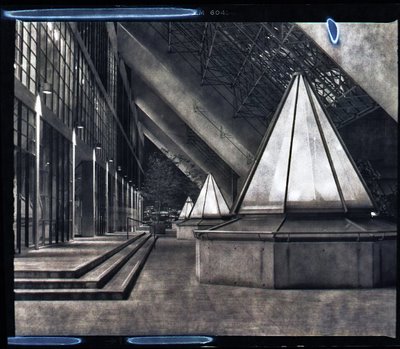
In my 35 years of being a photographer my photographs have been treated with respect. They may have appeared extra small, or smudged, or in the wrong colour but in almost ever case the pictures looked as I had taken them. Only once did I have a problem. The art director in question worked for a local business magazine. When I first met him he told me, “Alex give me a full frame photograph so I can crop the shit out of it.” I thought he was joking. I photographed, per instructions a gentleman holding an apple in his hand. When the magazine appeared the picture was of the gentleman’s hand holding the apple. I was furious.
In the middle 70s (I have been unable to find the exact date and not even in this Vancouver Sun article by Amy O’Brian was the date given) the CBC moved from its old and tired building on Georgia to its new facilities on Hamilton and Georgia. The fact is that Paul Merrick designed the new CBC building on Hamilton street and the structure won a Governor General’s Award. Somebody at the Corporation approved of the project and the unusual building was built. It seems to be almost as universally hated as the Eaton’s and now Sears building by Cesar Pelli.
I began taking pictures of variety shows at the new building as soon as it opened and I have “grown accustomed to its face” through the years. I liked the CBC cafeteria with the wonderful Shadbolt mural. I liked the cavernous studios, and the beautiful wood paneling of Studio One. I have heard memorable concerts there. Its acoustics are beautiful.
In the mid 80s Sean Rossiter wrote an article on the venerable Vancouver architectural firm Thompson, Berwick, Pratt and Partners. I was commissioned to photograph some of the firm’s notable structures at night. One of them was the CBC as Paul Merrick had designed it as an architect for that firm that gave us the Cenotaph, the Burrard Street Bridge and the BC Electric Building on Burrard.
I fell in love with the personality of architect Ned Pratt and I fell in love with architects and their architecture. I fell in love with the CBC at night as I took photographs of the curious pyramid-shaped skylights. For me the building is beautiful and functional.
A building’s design has to be respected and it has to be respected in the spirit of the times it was built. We might not like intricately baroque architecture in our Postmodern times. That does not mean that we must demolish baroque churches.
My friend, architect Abraham Rogatnick arrived in Vancouver in 1955 exactly when our main post office on Georgia had just been finished. Rogatnick was appalled at the structure. He dislikes it and thinks it occupies important city space that in this age of the internet a post office no longer merits. I think the post office was designed in the spirit of the monumental 50s when so much of the world had been destroyed by bombs. I love going into the post office to gaze at the lofty ceiling and imagining a cumulus cloud here and there. This building is Rumanian/Soviet architecture at its best. I like it. I like it as much as I like the CBC.

This is why I cannot abide when the city and the CBC without any clear mandate that I have been aware of have seen fit to surround and hide Merrick’s design with enough density condominiums that must even grate on Gordon Price who has been promoting city density for years.
What has emerged in the last few months is a structure that has to be as ugly as the two buildings that replaced our BC Electric, the BC Gas on Georgia and BC Hydro on Dunsmuir.
The West side of the CBC can be seen in the colour picture here. The parking lot for the truck (and entrance to Studios 40 and 41) has been mostly blocked by towers that wrap all around to the front on Hamilton. The towers are designed by the firm Hotson Bakker Boniface Haden. This firm has managed to emulate the common practice of ancient Mexican cultures that imposed their wills over the vanquished by building over the old pyramids new and even bigger pyramids. As soon as I can I will go and explore and see if I can still find Merrick's curious but lovely glass ones.
Our Beloved CBC, Parrots, Llamas, Midgets & Spaghetti
Wednesday, April 01, 2009

Warning! While I have often boasted that I never rant, what I have written below could be one. Read at your peril.
My uncle Tony had a technique with dealing with his nagging wife Sarita. “Yes dear, I will be there in a moment.” “Yes dear, I will do that today, without fail.” And then he would do as he pleased. The technique worked for 13 years. They were divorced when my uncle found an even more patient woman.
In 1975 when I arrived with my wife and two daughters to Vancouver I heard about a beautiful building that had been torn down. It was a department store called Eaton’s. I had no memory of it so the stories did not affect me. I felt differently in 1989 when the Georgia Medical Dental Building was demolished even after protracted protest. The building was beautiful. Now we only have the Marine Building to boast about in that area of our city.
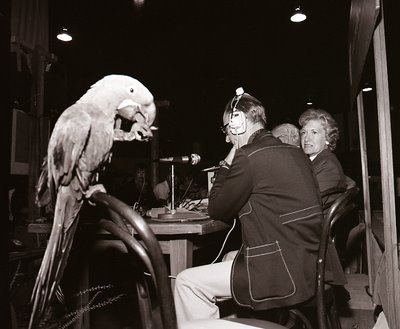
I see the Uncle Tony technique alive and well in Vancouver and in Canada. We sign petitions. We assert we do not want the Olympics. The results are always the same things are done in spite of protests and petitions.
As I walked today on Granville on my way to buy photo supplies at Leo’s Camera I had to brave noise, mud, fences and detour signs. Not only does it seem that all the protests and petitions against the Cambie construction of the Canada Line were useless but now I can see how Granville has been Cambied (I claim here and now the coining of the verb!).

And so in the last week I have received many e-mails from friends and from people I don’t know to sign an E-protest to attempt to save the CBC from the budget cuts. By the easy and effortless technique of pressing the send button I can feel I am doing my best to save the CBC from itself.

Except for the use of drones and a few rockets here and there the use of the button has yet to take over completely in our human expertise at warfare. We still find it necessary to kill people by using weapons that send metal slugs through people. We press triggers and not buttons. But we are content to protest with buttons from the comfort of our homes. I am not promoting here anything violent at all in contrasting bullets with buttons. Whatever happened to calling our MP and demanding they act on our behalf? What if we shower our Vancouver Sun with protest letters? What if we find some way to convince Carole Taylor that it would no longer be conflict of any interest and that she could be our spokeswoman in a crusade to save and improve the CBC? Unfortunately we no longer have Daryl Duke to write intelligent essays on why the CBC is important to our lives.
With that e-mail command to send I am supposed to sleep nights in my knowledge that I have done all that is possible to save our beloved CBC. I use the word beloved with all honesty but I have been told that this feeling is of one in a minority.
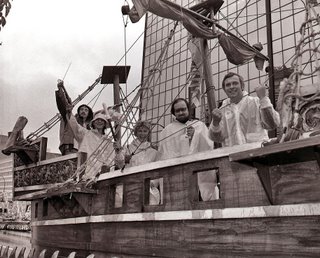
Our aboriginals have repeatedly asked for land and monetary compensation. The Uncle Tony Technique has been clearly used here. “Next year.” “Have patience. It will happen.” Years and years have passed with little being done for the plight of aboriginals. The Uncle Tony Technique relies on the proven fact that, at least here in Canada and in Vancouver, all protests peter out sooner or later. Just weather the storm is the corollary to the technique.
Every time I drive to Lillooet to visit my daughter and pass by the beautiful Lillooet train station I think of CN, BC Rail and the whole imbroglio of the legislature raids and the present BC government that is simply weathering the storm. This has worked every time, hasn’t it?
We can blog, and write letters to the editor about how we want to keep our CBC just the way it is. We can protest that CBC Radio is about the only media entity that keeps our province and other provinces together. I am sure it is important in keeping our country together.
Consider that Mark Forsythe’s noon to 2 program, BC Almanac. It is one of only two other radio programs ( North by Nortwest and Hot Air) that has listeners across our province. From one of the old photographs here you can note that in the late 70s the program was only an hour and a half long. BC Almanac is now to be cut to only one hour. This could be the decision of some executive who works in what we have called (most accurately as it is indeed its name) The Corporation. All along many have complained that the problem with the Corporation is the personnel at the top - the corporate heads. Could it be a coincidence that both the CBC and the venerable American GMC both have products nobody wants? I don't quite think so. While I no longer dream of buying a Plymouth Fury I know that without my CBC Radio my radios would only then be obsolete.
We can protest that we want to keep and enjoy commercial free radio. We can cite all the advantages. We can protest that we want a fairly unbiased reporting that is not beholden to advertisers. But we will protest in vain. A friend pointed out to me that we are living in a post-radio-talk-host era. There are no Websters, Bannermans or Mairs to fan the flames of our recalcitrant almost flame-proof consciences.
In the end those of us who try to defend the CBC are accused of being elitists or snobs. We have to be elitists and snobs because some of us like the obsolete music of other centuries. We are deemed to be elitist because we want announcers with pleasant voices that have no lisps and or speech impediments.
Cut a piece of tin from a tin can and bend it back and forth. It will be surprisingly resilient. But after a few too many foldings the tin will separate in two. That is what is being done to our CBC in small increments. When it finally breaks nobody will care or have a memory of what it was. It will be our Georgia Medical Dental Building of our forgotten past. We will not miss what was so diluted so that by the time it ceases being what it was supposed to be we will have no memory. We will have no memory of what it was.
As for me I will not send any e-mail to Harper. As my friend Robert Blake erroneously used to say to me all the time, “You can’t win if you don’t buy a ticket.” I don’t believe this ticket has a chance in ---- of winning anything.
The pictures you see here I took one very rainy day in the late 70s. It was the day of the PNE parade. I remember that the CBC float was the good ship Mirthful. From the parade I went to the PNE and took some pictures of the CBC in action with llamas, parrots and spaghetti. It was all in good fun.
If you believe that sending an e-mail to Harper is going to help click here.
CBC
More CBC.
Even More CBC
And Even More CBC
More
More Again
French CBC
A Lowly Crocus Cheers Me Up On A Windy Day
Tuesday, March 31, 2009
 The name crocus comes from the Greek krokos (κρόκος), which like the Hebrew karkōm, Aramaic kurkama, Persian and Arabic kurkum means saffron or saffron yellow. The genus Crocus is in the iris family (Iridaceae). They grow from corms and are mainly hardy perennials, and are found in a wide range of habitats, including woodland, scrub and meadows. There are about eighty species of crocus (of which approximately 30 are cultivated). Their cup-shaped, solitary, salverform flowers taper off into a narrow tube. The spice saffron is obtained from the stigmas of Crocus sativus, an autumn/fall-blooming species. Pruning my dead or dying roses even on a bright sunny day is not a cheerful task particularly as it was windy and cold. Many of my plants do not look all that good. Perhaps it is too early in spring to make an opinion. There is a slim possibility that in a few weeks I might see some new growth from underneath the dead canes of my roses.  In the middle of my round rose bed I spotted the mauve crocuses. Rosemary swears at them in late spring. After they flower they send up mounds of green leaves that mess up the tidiness of the rose bed. She gets on her knees and cuts them off in late spring. Our crocuses are either volunteers or someone planted them before we came to the house. They are cheerful and give colour when nothing much is in colour. You have to separate the petals to look on the bright orange (saffron yellow?) stigmas. In their own way my crocuses made my day.
Counting My Blessings - A Is For Zebra
Monday, March 30, 2009
 This morning I photographed a prosperous lawyer from Vancouver’s largest tax law firm. I had last photographed him 20 years ago and he was in need of a new photograph for his firm’s web page. We spoke at length as to what we had done since we last met in the studio all those years ago. I was floored when he told me that he had two sons in their 20s and that both had muscular dystrophy. It seems that both inherited it yet as far as my subject lawyer could recall nobody in his family had ever had the disease. I looked at my subject’s face lines (many but a handsome man indeed) with a different light. I called a friend after my shoot. We had a chat and a coffee at the Sears Starbucks. My friend has a teenage son with an active version of autism. I was thinking of my Maserati Biturbo when he told me of his travails with his son. I remember one day that I was driving my maroon Maserati on the ramp leading to the Granville St Bridge. I applied to the gas pedal enough pressure “to clean the sparkplugs” as my friend Sean Rossiter would say. My passenger was rocker/journalist John Armstrong. He was wowed as his head stuck to the seat at the sudden surge of the twin turbos. I remember telling Armstrong, “This car is rarely without some mechanical malady but when it is just right it soars and the noise from the tailpipes is pure music.” The only problem is that whenever I voice this or even think of it, something breaks and I have to spend a lot of money. A couple of days after the bridge incident my car developed a transmission clunk. I finally gave up trying not to think or to tell anybody what a pleasure it was to drive my Maser because I was emptying my bank account and transferring all of the funds to one very happy and ever richer Girolamo Clemente, my lucky mechanic. I parked the car and it lies forgotten in my garage. I was thinking of my Maserati because I was thinking of my family and how none of my daughters have any diseases or health issues. Our granddaughters, Lauren and Rebecca are healthy, too and pretty to boot. Could things be any better? Is this a Maserati situation where I should keep my mouth shut and not even think of it? My friend at coffee said something like, “I am jealous of you but happy for you. Take advantage of it.” He need not have said it as I am now fully aware of my luck. I told my Hilary and my granddaughters at the table tonight (Rosemary was away taking a computer course) how I savoured the moment we had together and if it meant I had to cook for them (something I always do when they come over) I would do it gladly. I told them that if I was suddenly diagnosed with some sort of lethal cancer I would not be fazed as anything past half a century is just extra. I have almost 17 years of extra time. When I mentioned that dying at this point would not upset me in the least it was Lauren (6) who said, “You should not be talking about these things at the dinner table.” Rebecca added, "You must live one day at a time and enjoy it." I am sure that at her age (11) I would have never thought of such "rubbish" or even dared to have uttered the recommendation to my grandmother. After our dinner Rebecca and Lauren invited us to a puppet show. One puppet (Rebecca as a dog) would say, “A is for airplane.” Lauren, the rabbit would repeat, “A is for zebra.” The dog would get furious and make the rabbit repeat it correctly. The next time around the rabbit would again say, “A is for zebra.” And on it on it went and I laughed! Thinking about Art Bergmann’s concert on Thursday I had a look at all my Bergmann records, tapes and CDs. There was one I had forgotten about, Art Bergmann –Design Flaw where he plays a 6 string and a 12 string acoustic guitar while being accompanied by Chris Spedding on electric guitar. There was no drum, no bass, nothing to distract from the lyrics and that unique Bergmann voice. As I listened to my fave, the Hospital Song, Hilary read the very complete liner notes of the Zulu release Young Canadians – No Escape which is all about Art Bergmann’s early career.  Tonight has been about as perfect a night as I could possibly imagine. I found this picture of Hilary taken with my Widelux, swivel lens panoramic camera. I asked Hilary a few questions. She was 17 and it was late spring. She was in grade 11. She had been invited to the graduation of one Thomas Chromey who was graduating from Kitsilano High School. Hilary is wearing Rosemary’s Mexican colorín jewelry. I asked Hilary about the dress. “I borrowed the dress from Ale (her older sister) who had many formal dresses because she went to York House (a Vancouver private school for girls).” I looked at the picture. We had moved to Athlone three years before, in 1986. The three conifers on the right are all gone. They succumbed to root rot. The garden is changed. But we are still happily here. I am thankful and appreciative that we are.
|


























